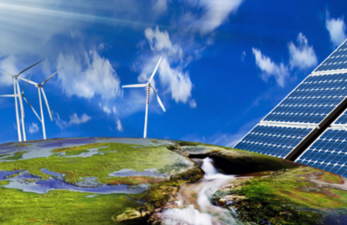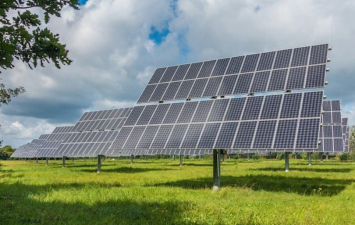In the tide of the times, we are standing at a critical node of environmental protection and sustainable development. With the increasing severity of global warming, environmental pollution and other problems, green energy, green travel and low-carbon life have changed from concept advocacy to urgent practical needs, and have become the only way for us to protect our home planet and create a better future.
In the tide of the times, we are standing at a critical node of environmental protection and sustainable development. With the increasing severity of global warming, environmental pollution and other problems, green energy, green travel and low-carbon life have changed from concept advocacy to urgent practical needs, and have become the only way for us to protect our home planet and create a better future.

Green energy
Green energy refers to energy that is pollution-free or minimally polluting to the environment during production and use, such as solar energy, wind energy, hydropower, biomass energy and hydrogen energy. Compared with traditional fossil energy, green energy has many incomparable advantages.
As an inexhaustible and clean energy, solar energy is widely used around the world. Whether it is a large solar power station in the vast desert or a small photovoltaic panel on the roof of a city, it converts sunlight into electricity to power our lives and production. Wind energy uses wind power to generate electricity. Its units stand on the seashore or on the plateau, rotate with the wind, and continuously output green electricity. Hydropower uses the energy of water flow to convert it into electricity through dams and hydropower stations, steadily supplying the society's electricity needs. These green energies not only reduce dependence on fossil energy such as coal and oil, and reduce carbon emissions, but also effectively alleviate the energy crisis, reduce air pollution, and make great contributions to the improvement of the ecological environment.
Green travel
Green travel refers to taking travel methods that have less impact on the environment, which not only saves energy, improves energy efficiency, reduces pollution, but also is beneficial to health and takes efficiency into consideration. It is not only a travel choice, but also an environmental protection attitude and life concept.
With the acceleration of urbanization, the number of cars has continued to rise, and traffic congestion and exhaust pollution have become a chronic disease of urban development. The rise of green travel methods provides an effective way to solve these problems. Choosing to walk or ride a bicycle to travel is not only zero-emission and pollution-free, but also can exercise the body, enhance physical fitness, and keep us healthy and energetic in our busy lives. Public transportation, such as subways, buses, light rail, etc., has become the main force of urban green travel with its large capacity and high efficiency. Multiple people sharing a car greatly reduces the use of private cars, reduces energy consumption and exhaust emissions. New energy vehicles, such as electric vehicles and hydrogen fuel cell vehicles, are gradually entering people's lives with their clean and efficient characteristics. They have almost zero emissions during driving, making positive contributions to improving air quality and reducing carbon emissions.

In daily life, we can easily practice the concept of green travel. When traveling short distances, you may choose to walk or ride a bicycle to enjoy the scenery along the way and enjoy the joy of exercise; for medium and short distance travel, give priority to taking public transportation, which is convenient and environmentally friendly; if you must drive, try to choose new energy vehicles, and plan your route reasonably to avoid congestion and reduce energy waste. In addition, you can actively participate in shared travel modes such as carpooling and hitchhiking to improve vehicle utilization and reduce carbon emissions.
Low-carbon life
Low-carbon life advocates minimizing energy consumption and carbon emissions in daily life to reduce the impact on the environment. It runs through all aspects of our lives, from food, clothing, housing, transportation to work and entertainment. Every small action can contribute to the cause of environmental protection.
In daily life, we can start with many small things and practice the concept of low-carbon life. For example, save water and electricity, turn off faucets and electrical switches, set the air-conditioning temperature appropriately, and avoid energy waste; reduce the use of disposable items, bring your own eco-friendly bags, cups, tableware, etc., and refuse white pollution; do a good job of garbage sorting, separate recyclables, hazardous waste and other garbage, and improve resource recycling rate; choose green and environmentally friendly household items, such as energy-saving lamps, water-saving appliances, etc., to reduce household energy consumption; in terms of diet, order food in moderation, avoid waste, advocate vegetarianism or reduce meat consumption, and reduce carbon emissions from animal husbandry.
